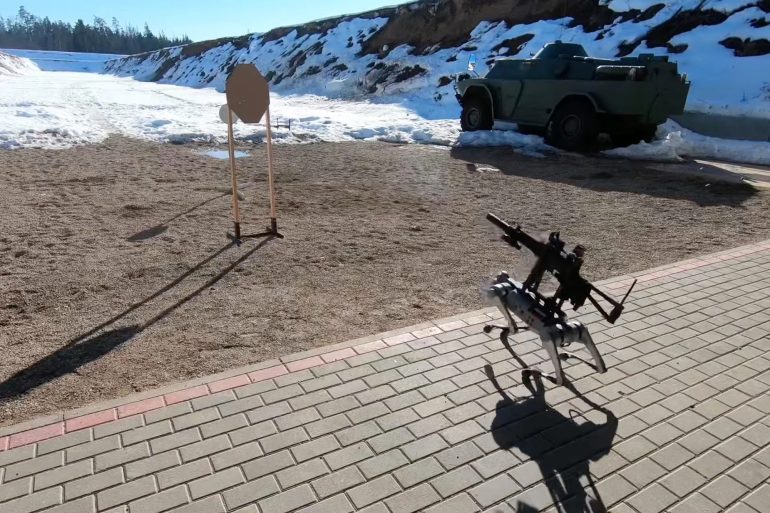- US Marines Special Operations Command (MARSOC) evaluating Ghost Robotics’ Q-UGVs.
- Focus on reconnaissance, surveillance, and potential weaponization.
- Q-UGVs armed with Onyx Industries’ SENTRY remote weapon system (RWS).
- Human-in-the-loop control maintained for engagement decisions.
- Evaluation reflects growing interest in robotic unmanned ground vehicles.
- Concerns raised regarding ethical implications and domestic use.
- Despite assurances, questions remain about AI-enabled autonomy.
- Market implications: Potential for growth in military robotics sector with emphasis on ethical considerations.
Main AI News:
The United States Marine Forces Special Operations Command (MARSOC) is currently assessing a new generation of robotic quadrupedal unmanned ground vehicles (Q-UGVs) developed by Ghost Robotics. These cutting-edge machines are undergoing rigorous evaluation for various applications, from reconnaissance and surveillance to the potential deployment of weapon systems. Onyx Industries, a leading defense tech company, has provided the gun systems for these robotic canines.
MARSOC’s evaluation involves two armed Q-UGVs equipped with Onyx Industries’ SENTRY remote weapon system (RWS). This advanced system boasts AI-enabled digital imaging capabilities, enabling it to autonomously detect and track potential targets such as individuals, drones, or vehicles. However, crucially, all decisions regarding engagement remain under human control, with the system maintaining a human-in-the-loop approach.
In a statement to The War Zone, MARSOC emphasizes that while weaponized payloads are being considered, they are just one aspect of the broader evaluation process. The command is committed to adhering to Department of Defense policies concerning autonomous weapons, ensuring a thorough and ethical assessment.
The evaluation of these armed robotic canines reflects a growing interest in small robotic unmanned ground vehicles for military applications. While unmanned aerial vehicles (UAVs) have been utilized for remote strikes for years, the emergence of affordable quadrupedal robots has sparked new discussions and experiments in military circles.
However, alongside the excitement surrounding these advancements, concerns persist regarding the ethical implications and potential risks associated with increasingly autonomous weapons systems. Questions loom regarding the future of warfare and the possibility of domestic use by law enforcement agencies, as seen in recent decisions such as the authorization of lethal robots by the San Francisco Police Department.
As technology continues to advance, the specter of autonomous weapons looms large. While assurances are made regarding human oversight, the trajectory toward greater autonomy raises pertinent questions. The extent to which AI-enabled systems will operate independently, even in kinetic scenarios, remains a subject of debate within military and industry circles.
While Q-UGVs hold promise in enhancing reconnaissance and security operations while minimizing risks to human personnel, ethical considerations must remain paramount. As armed robotic systems evolve, it becomes imperative to ensure that their deployment aligns with established policies and international law, safeguarding against unintended consequences in an increasingly complex landscape of warfare and technology.
Conclusion:
The assessment of armed robotic canines by the US Marines Special Ops signifies a notable advancement in military technology. The collaboration between Ghost Robotics and Onyx Industries reflects a growing market interest in small robotic unmanned ground vehicles for military applications. However, ethical considerations surrounding autonomous weapons remain critical, requiring careful navigation in the evolving landscape of warfare and technology.

